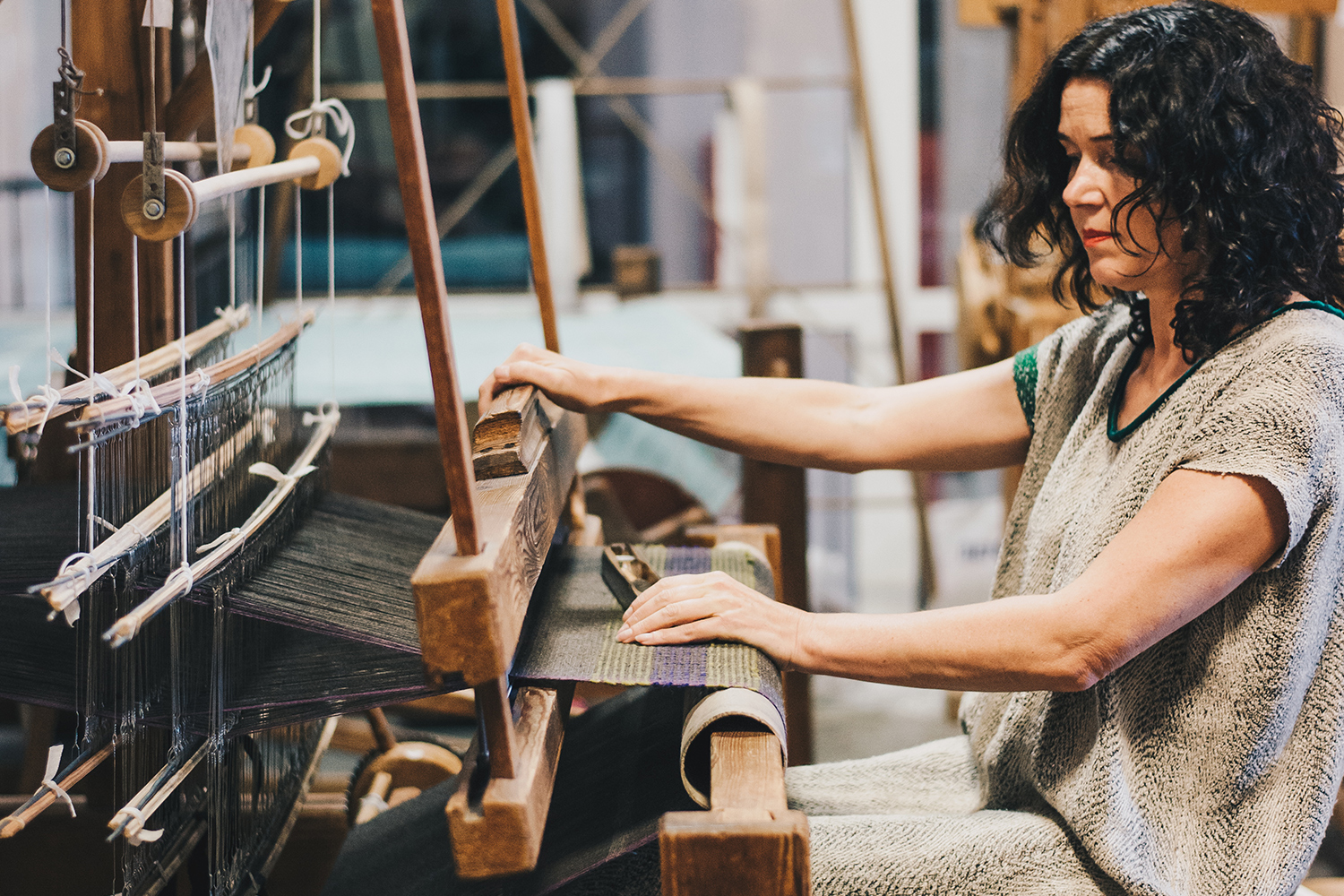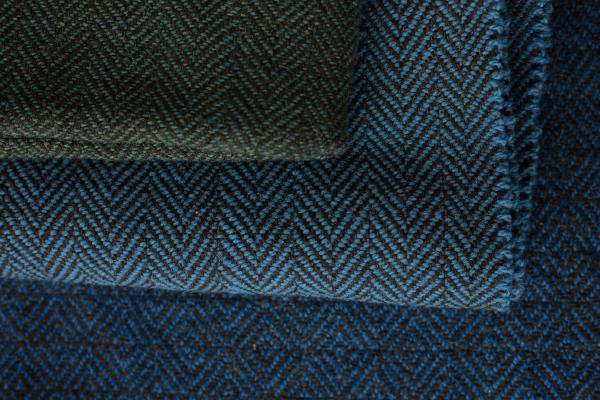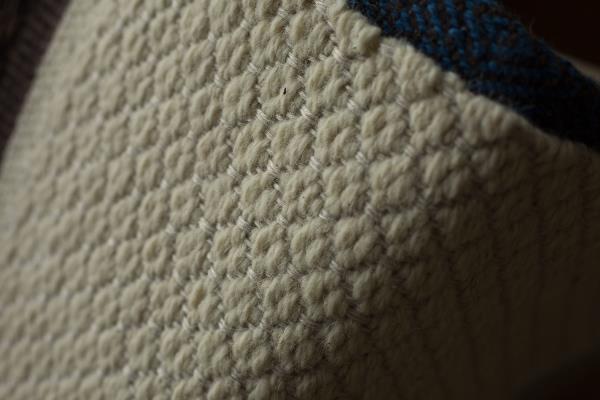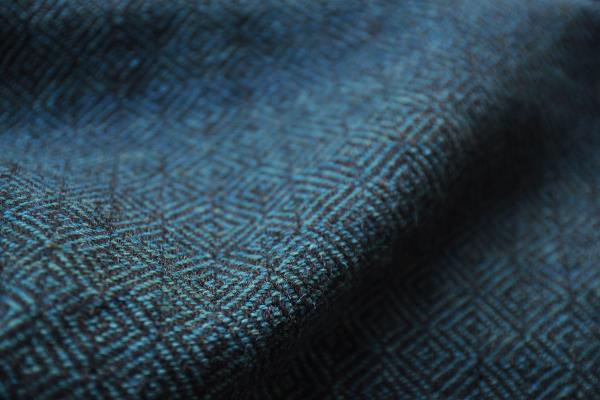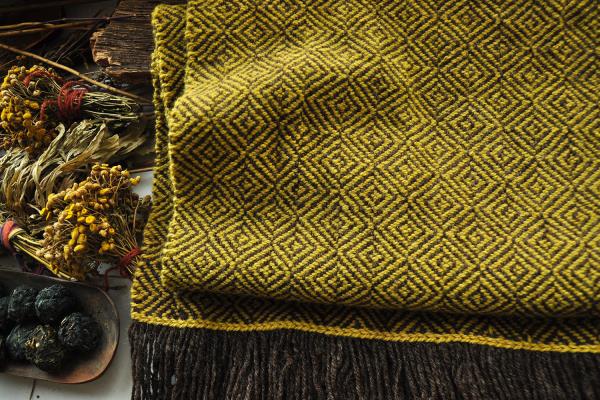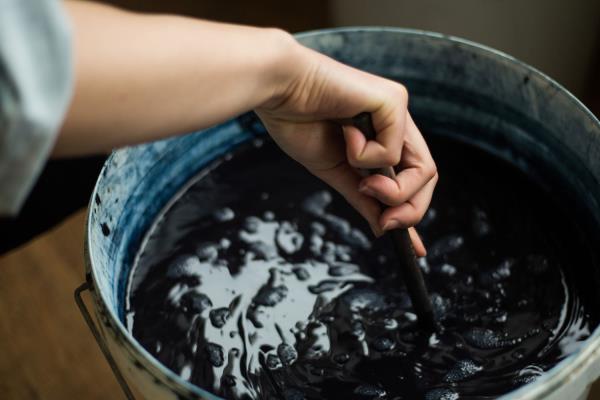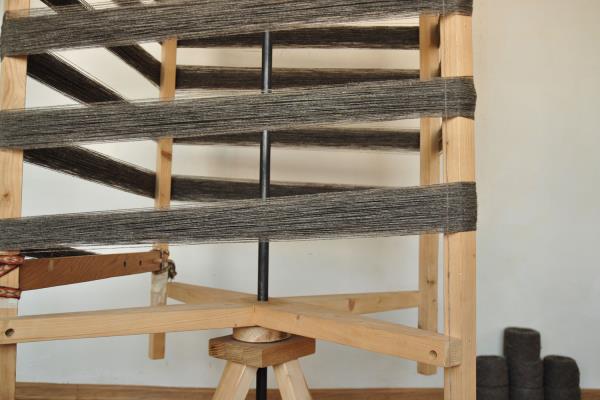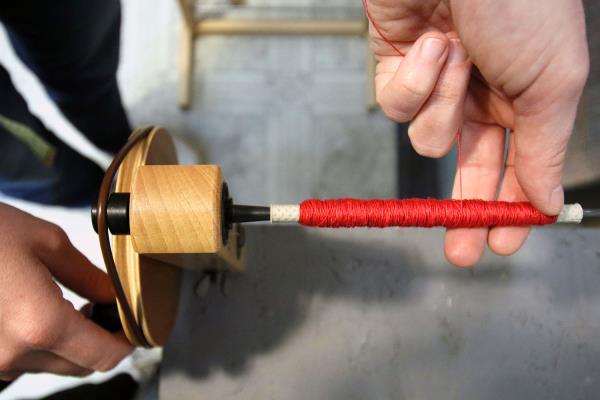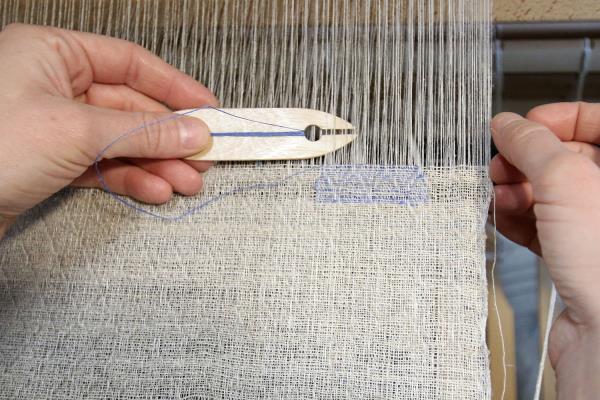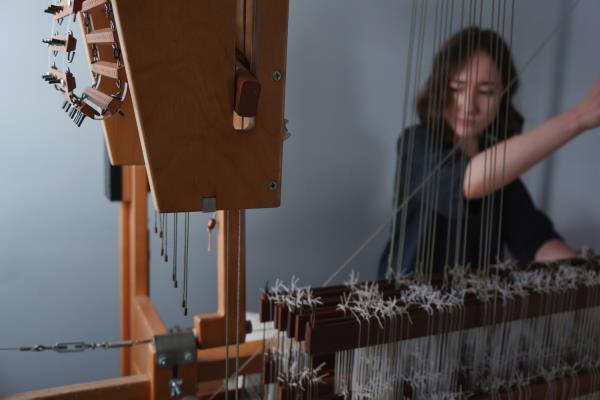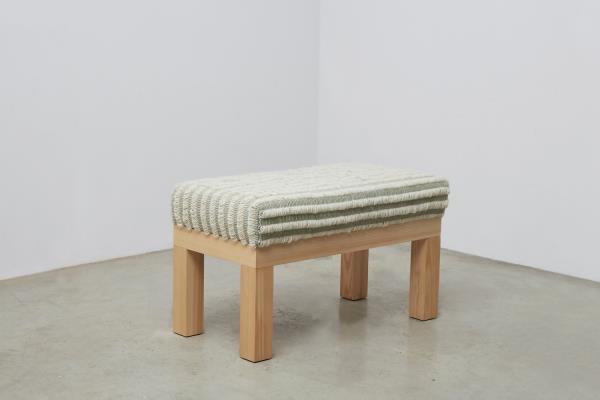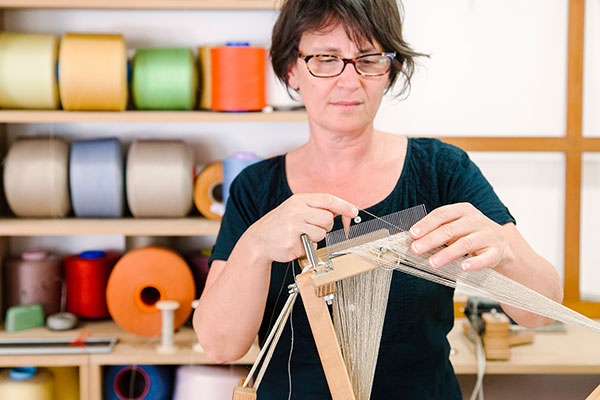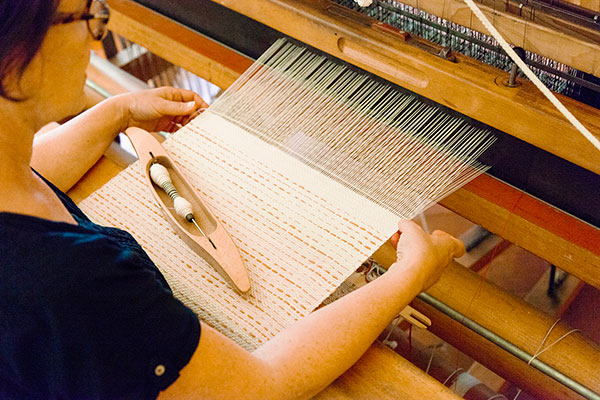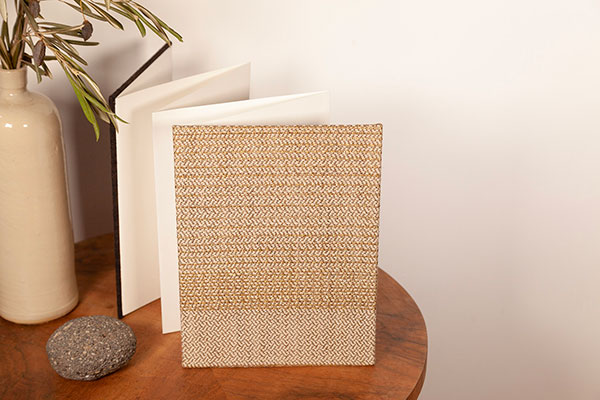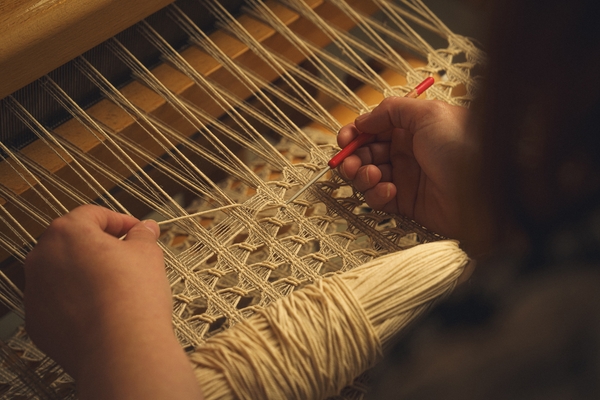

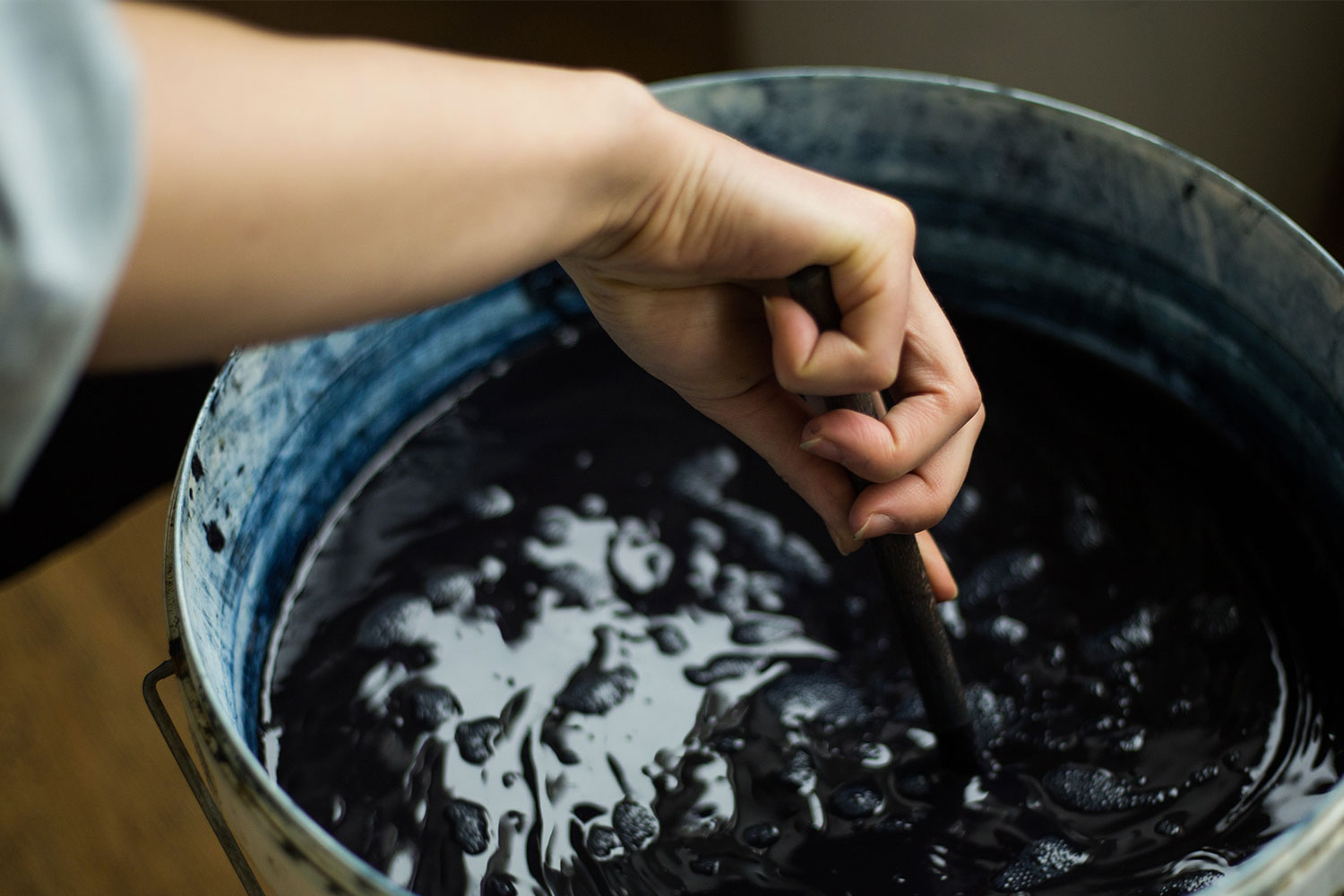
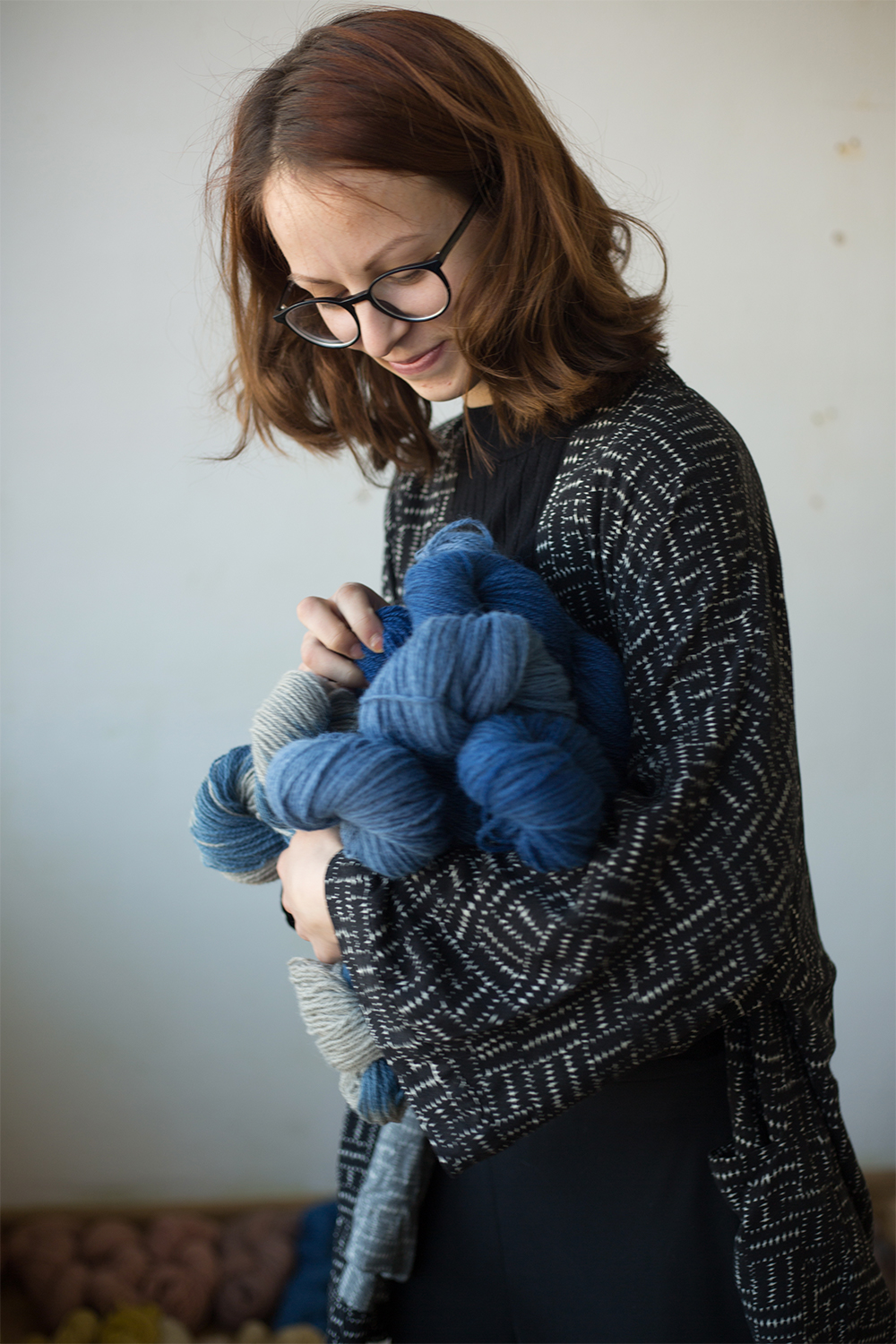
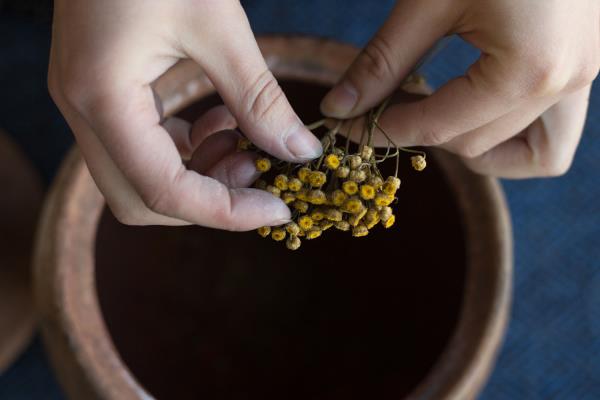
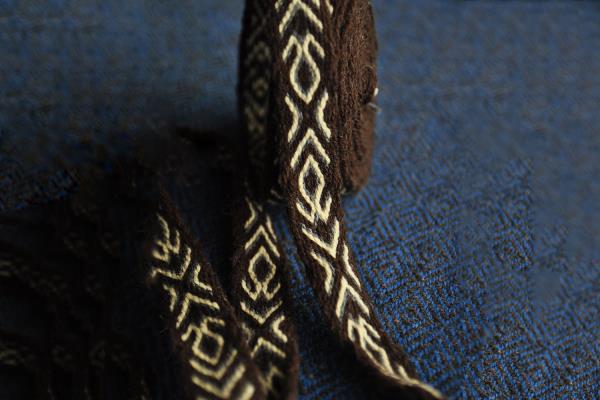


Raminta Berzanskyté
Immersed in the magic of colour
- Raminta dyes thread and fabric using natural colours
- Creating dyes requires patience, time and scientific knowledge
- She studied dyeing with natural materials in Japan and in France
Raminta Beržanskytė looks for her materials in forests and fields. Bark, twigs, tree needles, heather, tansy, whip – around 70 plants in Lithuania can be used in dyeing, and mixing them together results in even more shades, which she uses to colour threads and fabrics. Raminta mixes her own recipes to create perfectly natural colour combinations. Authenticity is very important to her; in addition to dyeing, she weaves with ancient looms, reconstructs ancient clothes and braids the oldest Lithuanian woven bands. Inspired by archaeological artefacts, her fabrics are based on textiles and archaeological sources that have survived through time, and she constantly collects stories from the elderly. A big part of her work involves experimenting. Her fabrics are minimalist, delicate, practical and aesthetically pleasing.
Interview

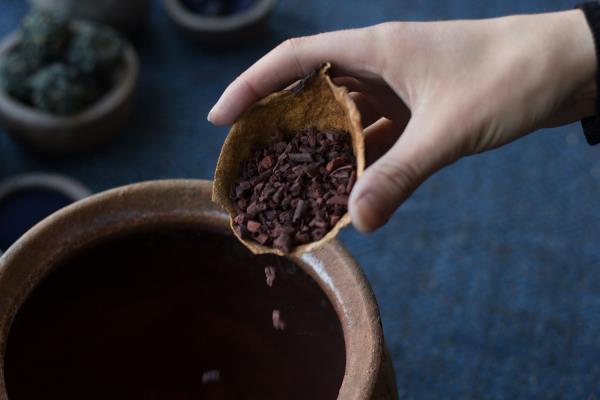
- How did you get into dyeing with natural dyes?
- I started in 2015 while studying at Vilnius Academy of Fine Arts. I was fascinated by the possibilities of this method of dyeing; amazingly beautiful colours can be extracted from a plant that we often overlook. It is also a way to get in touch with the past, to revive it.
- Do you have any specific techniques?
- The dyeing of yarns and fabrics with woad. It is a rarer plant nowadays, although in the past it was quite common. Archaeological research shows that as early as the 1st century AD there was already blue fabric, from woad, in Lithuania.
- How does your craft relate to your location?
- For dyeing yarns, I use plants native to Lithuania, and in the production of reconstructive fabrics I also rely on what could have been worn in Lithuania a thousand years ago. But I don't only use Lithuanian materials for dyeing, because in the Middle Ages we did not have our own indigo.
- What do you like most about your craft?
- I really like it that I don't have strict working hours, I work as much as I need to and want to. There is also a lot of joy in communicating with people who find me, learn to dye and buy my work. They are extremely warm and pleasant, interested in crafts and appreciate handmade pieces.
Raminta Berzanskyté is a master artisan: she began her career in 2013 and she started teaching in 2018
Works
Where
Raminta Berzanskyté
Find Raminta Berzanskyté in the itinerary

